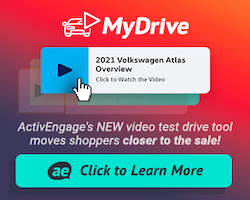With 2016 right around the corner, it’s time to start thinking about your dealership’s staffing needs in the coming year.
As manager, you’re used to living in the daily “my hair’s on fire” reality of running a sales and service team. There isn’t a day that goes by where something unexpected, unexplained, or you’ve-got-to-be-kidding-me happens.
I get it, I’ve been there. Heck, I’m there today.
One of the common occurrences at dealerships that causes major heartburn is what I call “I’ll worry about recruiting when I need to fill jobs.”
If you’re like most of your dealer peers you wait until the last possible moment to spend any amount of time proactively filling a talent bench. Instead, you wait until you have open spots, slap together a job description, put up a posting on Craigslist or still the local newspaper, and hope for results (aka “post and pray”).
You schedule interviews with the best applicants. None of them are good fits.
Only 15 days left to hit your volume target. Something not unlike panic starts to churn in your gut.
“Hey”, you say to yourself, your spouse, or your dog, “I’m down four heads on the sales floor and need to hire four people in 5 days. I’ll take anyone who can pass a drug test and speak English. Drug test optional.
Two days later, you have your four people. Two of them you aren’t crazy about. One of them has some potential. One of them didn’t show up on the second day. A week later, two of them quit. You’re still down three, and now you’re really in danger of missing your number.
Are you laughing right now because you’ve gone through this scenario once or twice? Crying, because you go through it month after month?
How do you avoid this situation?
It’s called Workforce Planning.
Workforce Planning is, simply put, planning for the number of people you’ll need in order to run your store in order to hit your financial plan. Meaning, it’s figuring out how many people you need to plan to recruit if your business grows as you’ve outlined (you do do business forecasting, right?). There are a number of ways for a manager to draft their Workforce Plan.
The 8-Step Workforce Planning Process
Step 1: Write down the number of employees you currently have on your team.
For this example, let’s say it’s 10.
Step 2: Write down your average annual turnover rate, expressed as a percentage.
If you started last year with 10 employees, and 3 quit (or whatever), that’s a 30% attrition rate.
Step 3: Multiply your attrition rate by the number of employees you currently have. The answer is the minimum number of employees you’ll need to replace the ones who, based on last year’s number, will quit this year. These hires are easiest to plan for, because you know they’re going to happen. If you had no attrition last year, great, but you’re not off the hook just yet.
In this example, that means 10 people times 30% = 3 hires you’ll need to make.
Step 4: Write down the number of people who work for you who you’d like to fire because they continuously fail to meet your expectations. Let’s say that’s two people. (See, I know you have staff that you’d like to fire. But you don’t, because you’re either too nice or too chickenshit. ‘But I’m already down four heads, and you’re telling me to fire people?!’ This is another topic, and I’m not going there today.)
Add two more people to your number, which is now a total of 5 (3 turnover + 2 fired).
Step 5: Take a look at your growth plan. What unit sales growth targets are you planning to hit in 2016? Now, how many people do you think will need to be hired in order to deliver on these new growth numbers? Write that number down.
Keep it Simple example – you want to increase sales by at least 200 cars, and your average rep does 12 cars a month. That’s two new reps to sell at least 200 more cars.
Step 6: Add together the number you wrote down in steps three, four, and five.
That’s 3 + 2 + 2. If you need a calculator for that math, consider a career change to F&I. 🙂
Step 7: Divide Step 6 by 12. The result is the number of hires per month you need to make to meet your Workforce Plan.
In this example, it’s 7/12 = .58 people per month, or one hire every two months.
Step 8: Say to yourself, “Whoa. That was easy. Okay, now what?” (my favorite question)
With a completed Workforce Plan, you’re looking at a reasonable estimate of your store’s recruiting needs over the coming months. What does this plan tell you?
Newsflash #1: You’re going to have to hire people this year.
Newsflash #2: You’re pretty sure how many you’ll need each month.
Newsflash #3: You just realized that you’re not currently doing anything to ensure that you have the right people in place at the right time.
You know that you have to hire people next year, so why was any of this a surprise?
It’s time to treat hiring and recruiting like the core, critical operational process that it is.
Questions:
What’s your excuse for not allocating at least an hour a day to recruiting and hiring?








